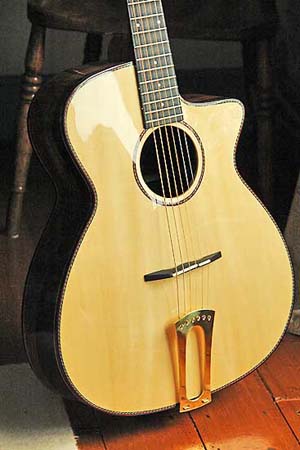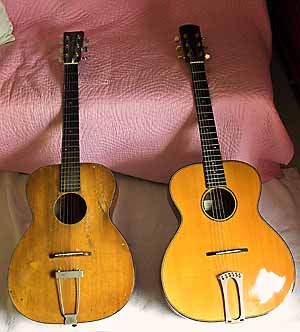Six string arch-top guitar
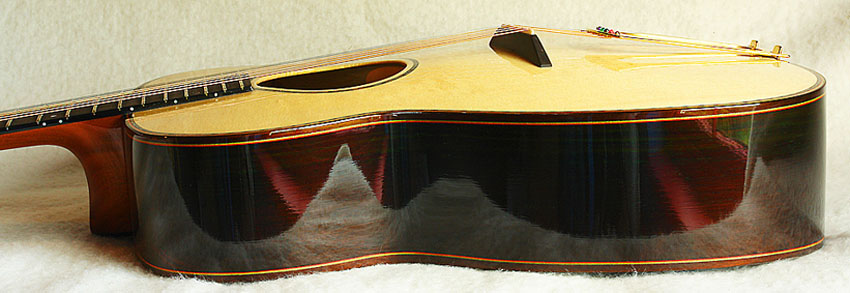
History and design
After many years building arch-top citterns and mandolins, I built my first arch-top guitar in 1981.
It had an X-braced carved European spruce soundboard, non carved Indian rosewood back and sides and a Brazilian mahogany neck. The fingerboard and non-adjustable bridge were ebony, and I made a two piece brass tailpiece. The headstock had straight sides, soon changed to the curved design I’ve used ever since.
It was inspired by my much loved 1931 arch-top Martin C1, so had a round hole rather than f-holes,and the fingerboard lay directly on the soundboard rather than being raised above it.
In 1987 I built a 12 string arch-top based on my larger Model 2 body with 12 frets to the body.
Characteristics
These guitars don’t have the typical arch-top sound. They have the good attack you’d expect, but are also bright and rich with good sustain, suiting fingerstyle as well as plectrum playing. They have excellent separation; the six string is clear and incisive and the twelve string has none of the mushy wash of sound that can be a problem with flat-top twelve string guitars.
The basic design of my arch-tops has not changed over the years. I’ve made many changes, such as neck joint modifications and different soundboard arching, but nothing that affects the original principles. The six string is now built on the Model 1 Sicilian body, a variation on the original Model 1 shape
I offer alternative woods for neck and back and sides, as on my flat-top guitars, and the option of German or Italian spruce for soundboards.
Arch-tops take longer to play in than flat-tops, but over time they can change more. I still have my original arch-top from 1981; the sound has opened out hugely over the years.
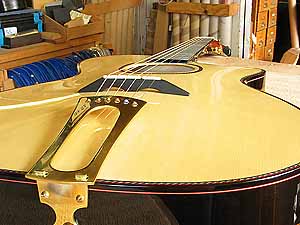
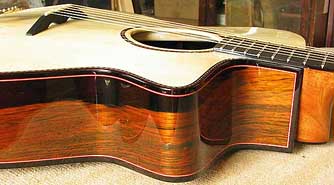
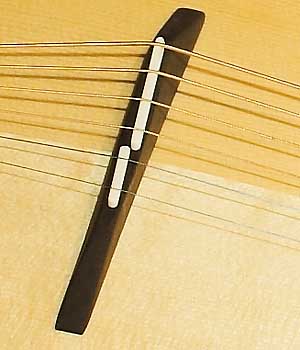
Specifications
| Soundboard: | Carved German or Italian spruce |
| Back and sides: | Brazilian rosewood, African Blackwood, or Wengé |
| Neck: | Mahogany or Wengé |
| Fingerboard: | Ebony |
| Bridge: | Ebony with two piece bone saddle |
| Binding: | Indian rosewood with red/gold/green purfling, other options available |
| Trim: | Birdsfoot edging with red/gold/greeen purfling, other options as for binding |
| Body Width: | 16.3″ (415 mm) |
| Body Length: | 495mm (19.5”) |
| Max body depth: | 110mm (4.3”) |
| F/b width at nut: | 1.75″ (45 mm) |
| Tuners | Gold plated Gotohs, Gotoh 510s optional |
| Scale: | 650mm = 25.6” |
| Pickup (optional): | Highlander |
Photos clockwise from lower left:
Compensated saddle
Optional cutaway
Brass tailpiece
Optional cutaway
With 1931 Martin
